Ray casting, ray tracing and path tracking concepts and differences
Ray Casting [1968]
Ray Casting, as the first step in the ray tracing algorithm, originated in 1968 and was proposed by Arthur Appel in an article entitled "Some techniques for shading machine rendering of solids." The specific idea is to emit a ray from each pixel, and then find the closest object blocking the path of the ray, and the color of each pixel in the viewing plane depends on the brightness generated from the visible light surface.
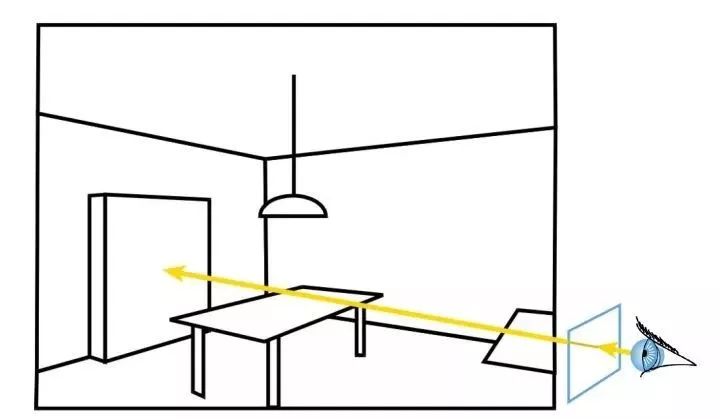
Raycast: Rays per pixel from the eye to the scene
Ray Tracing Ray Tracing [1979]
In 1979, Turner Whitted added the interaction of light with the surface of the object on the basis of ray casting, allowing the light to continue to propagate along the surface of the object along the reflection, refraction, and scattering until it intersects the light source. This method was later also referred to as the classic ray tracing method, the Recursive Ray Tracing method, or the Whitted-style ray tracing method.
The main idea of ​​the ray tracing method is to emit light from the viewpoint to the pixels on the imaging plane, find the intersection of the closest object intersecting the ray, and if the surface at that point is a scattering surface, calculate the color produced by the light source directly irradiating the point; If the surface is a mirror or refractive surface at that point, it will continue to track another light in the direction of reflection or refraction, and so on, recursively until the light escapes the scene or reaches the set maximum recursion depth.
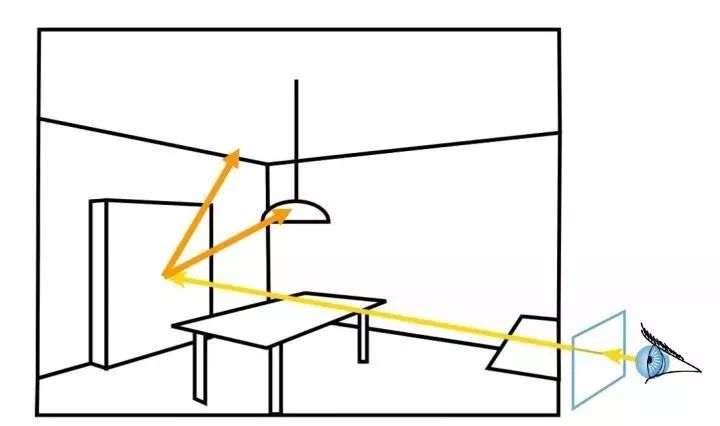
Classic Ray Tracing: Rays are projected from the eye to the scene per pixel and follow the secondary rays ((shadow, reflection, refraction), combined with recursion
Ray tracing is a special rendering algorithm in 3D computer graphics. It tracks the light emitted from the eye instead of the light emitted by the light source, and a mathematical model of the generated scene is generated through such a technique. The result obtained is similar to the result of the ray casting and scanning line rendering method, but this method has better optical effects, such as more accurate simulation effects for reflection and refraction, and is very efficient, so when pursuing high quality This method is often used for effects.
The following illustration shows a good idea of ​​the ray tracing method:
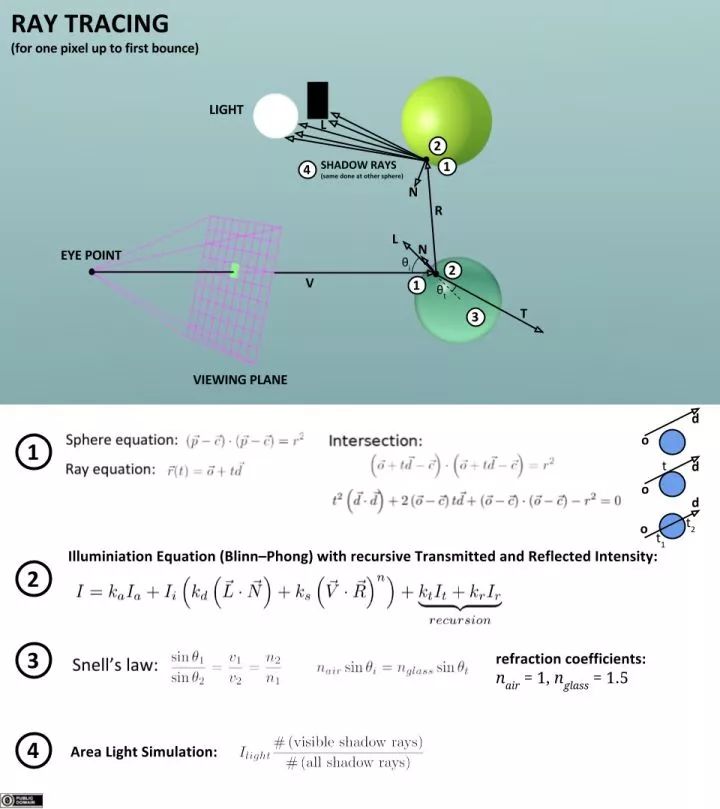
Ray Tracing Illustration First Bounce

Rendering based on ray trace rendering 1
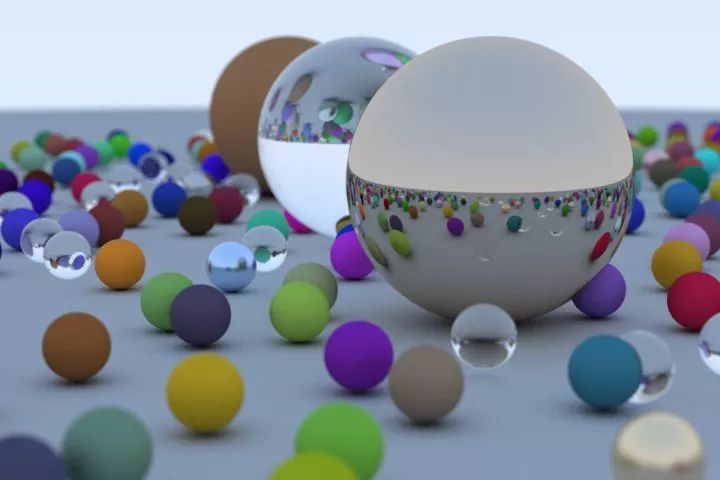
Based on ray tracing rendering effect Figure 2
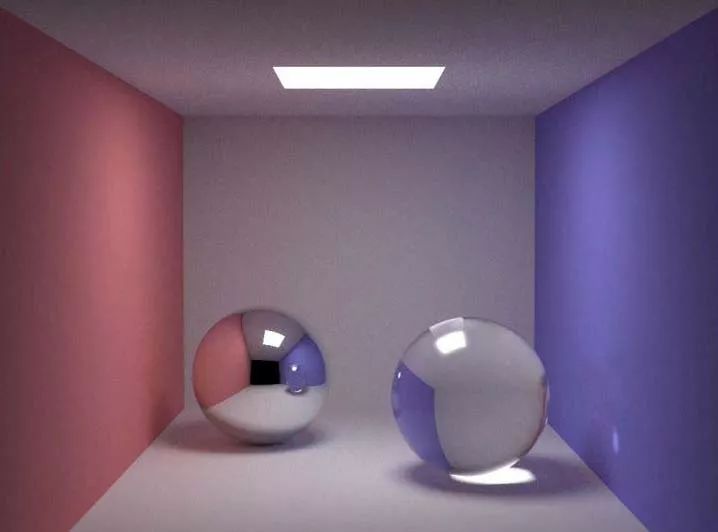
Typical ray tracing renderings
One of the biggest drawbacks of ray tracing is performance. The amount of computation required is so great that current hardware can hardly meet the needs of real-time ray tracing. Traditional algorithms in raster graphics use data consistency to share computations among pixels, and ray tracing usually treats each light as an independent light, each time recalculating. However, this independent approach also has some other advantages, such as the ability to use more light to resist aliasing and improve image quality when needed. Although it correctly handles the phenomenon of mutual reflection and optical effects such as refraction, traditional ray tracing is not necessarily a true effect image. Only true approximation images can be realized when the rendering equation is very similar or fully implemented. Since the rendering equation describes the physical effect of each beam, implementing the rendering equation can give true real results, but this is usually not possible considering the required computing resources. Thus, all possible rendering models must be approximations of the rendering equation, and ray tracing is not necessarily the most viable method. Some methods, including photon mapping, are based on ray tracing to implement a part of the algorithm, but can get better results.
Distributed Ray Tracing Distributed Ray Tracing [1984]
Cook introduced the Monte Carlo method to the field of ray tracing in 1984, and extended the classical ray tracing method to Distributed Ray Tracing, also called stochastic ray tracing. Simulate more effects such as metallic luster, soft shadows, Depthof Field, motion blur, and more.
Path Tracing Path Tracing [1986]
Kajiya proposed the concept of path-tracking algorithm in 1986 and pioneered the field of global illumination based on Monte Carlo. According to the rendering equation, the path tracking method proposed by Kajiya is the first unbiased rendering method. The basic idea of ​​path tracking is to emit a line of light from the point of view. When the light intersects the surface of the object, it continues to sample a direction according to the material properties of the surface, emits another line of light, and iterates until the light hits the light source (or escapes the scene). Using Monte Carlo's method, calculate its contribution as the pixel's color value.
In simple terms, path tracking = ray tracing + Monte Carlo method.
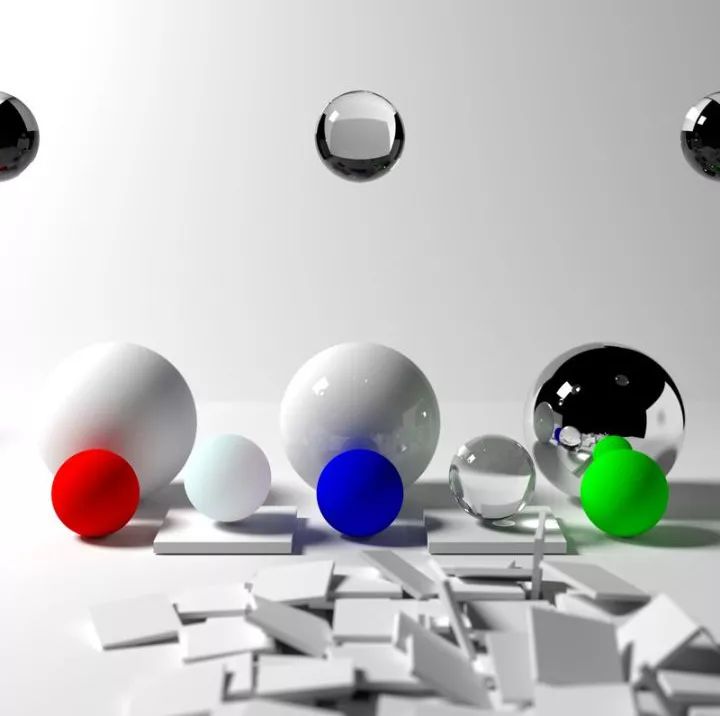
Effect rendering based on path tracking rendering
Bidirectional Path Tracing [1993, 1994]
The basic idea of ​​Bidirectional Path Tracing is to simultaneously emit rays from the viewpoint and the light source. After several bounces, the eye path and the vertex on the light path are connected (when connected). Need to test visibility) to quickly generate many paths. This method can produce some traditional paths to track the light path that is difficult to sample, so it can effectively reduce the noise. Further, [Veach 1997] rewrites the rendering equation into the form of a path integral, allowing multiple path sampling methods to solve the integral.
Ray Casting, Ray Tracing, Path Tracing Differences
Beginners often don't understand the differences between Ray Casting, Ray Tracing, and Path Tracing. Gongda @ traitors have answered very well in the answer to https://. Ingenious, this article directly quoted over:
• Ray Tracing: This is actually a framework, not a method. Raytracing is called in this framework. This framework is to launch ray from the point of view and reflect, refract, or absorb according to the rules when intersecting with the object. When you come across a light source or go too far, stop. In general, the amount of computation is not small.
• Ray Casting: In fact, this and volumetric can be decoupled. It is the first step of ray tracing. It emits light and intersects with objects. This can be done very quickly. Use it in Doom 1 as an occlusion.
• Path Tracing: ray tracing + Monte Carlo method. After the intersection, a random direction will be selected to continue tracking and calculate the color based on BRDF. The amount of computation is not small either. There are also some small categories, such as Bidirectional path tracing.
This is a special maskking High 2.0 e-cigarette product series. We sell maskking high 2.0 vape, maskking 1000 puffs, and other pod maskking high 2.0.
We are specialized electronic cigarette manufacturers from China, Vapes For Smoking, Vape Pen Kits suppliers/factory, wholesale high-quality
products of Modern E-Cigarette R & D and manufacturing, we have the perfect after-sales service and technical support. Look forward to
your cooperation!
maskking high 2.0 vape disposable,maskking high 2.0 electronic cigarette,maskking high 2.0 vape kit,maskking high 2.0 vape starter kit,maskking high 2.0 vape mod kit
Ningbo Autrends International Trade Co.,Ltd. , https://www.mosvape.com